Sneak peek: The 4 parenting attachment styles are helpful in understanding the dynamics of bonding
Thanks to my last post, we now understand the origins of attachment theory–what the researchers were interested in and why. Now, let’s move on to understanding the theory itself and how it helps us understand parenting attachment styles. Even today, this research forms much of the basis of the study of child development and parenting.
Psychologist Mary Ainsworth first began studying and testing her theory of attachment in Uganda in the mid-1950s. She intensely observed mothers and infants in their homes in Uganda several hours a day for up to nine months. Upon returning to the U.S., she continued a similar type of study in Baltimore with a sample of American mothers and infants.
Related reading: The Thoughtful Parent’s Guide to Attachment Theory
Ultimately, she devised a study method called the Strange Situation which enabled researchers to determine what kind of infant attachment style each baby had with his/her parent. Here’s a video clip of how the Strange Situation works:
The Strange Situation and What it Means for Parenting Attachment Styles
Basically, the Strange Situation involves a series of short separations and reunions between the infant (usually around 12 months old) and his/her parent or primary caregiver (usually the mother). How the child responds to the parent when she returns is key to understanding the infant attachment styles. Ainsworth ultimately developed four attachment categories based on the Strange Situation:
Secure:
Most children (about 60%) play happily when in the same room with their mother. They typically spend some time close to their mother and some time exploring their surroundings. They use their mother as a “secure base” from which to explore their new environment. Upon separation, these children are typically somewhat distressed but are easily calmed and comforted by their mother when she returns.
Ambivalent:
Some children do not use their mother as a secure base to such a degree and instead, try to stay close to her even before the separation. When separated these children are extremely upset. Upon reunion with their mother, they seem to react with some ambivalence–they may cry to be picked up but then seem to push the mother away or not be easily soothed.
Avoidant:
Some children show a pattern of avoidance with their mother. They do not engage in play with their mother while she is in the room and when she leaves they show little distress. Upon reunion with their mother, these children do not try to readily seek her out
Disorganized:
This category was developed several years later. These children are often very distressed by separations from their mothers but display disorganized behavior upon her return such as approaching but then backing away. They may show behaviors like frozen expressions or rocking. Most often these patterns are seen among children whose mothers have mental health problems or have experienced extreme trauma.
It is important to note that most children exhibit a secure attachment with their caregiver. Research has shown that children who show signs of insecure attachment (i.e., avoidant, ambivalent, etc.) most often have parents who were unresponsive or inconsistent in their responses to the child (i.e., sometimes responsive but not always) so he/she doesn’t know how to react.
It’s also important to note that you cannot really identify the style of attachment your infant has just by your interaction with them. These categories were designed to be evaluated in a lab setting with researchers who have extensive training in attachment theory. I know it’s tempting to assume our children have a certain attachment pattern, but I would really leave the categorizing up to the researchers.
Related reading: What Being a Stay-at-Home Mom Taught Me About Child Development {that a Ph.D. didn’t}
What About Attachment Parenting?
I also want to point out that attachment theory is different from attachment parenting. In developing attachment theory, psychologists Bowlby and Ainsworth did not set out any specific parenting techniques per se. Ainsworth wrote that the main factors that influence attachment are: sensitivity-insensitivity, acceptance-rejection, cooperation-interference, and accessibility-ignoring.
Related Reading: How Breaking the Attachment Parenting “Rules” Taught Me One of the Best Lessons
Attachment parenting is a term coined in recent years (not by Ainsworth) to describe a combination of certain parenting techniques and principles. Proponents of attachment parenting often encourage practices such as natural birth, co-sleeping, and babywearing. While the original attachment theorists (Ainsworth and Bowlby) focused on sensitive, responsive parenting they never referenced many of the terms used in attachment parenting circles. In other words, a parent can form a secure attachment with their child in other ways than solely focusing on “attachment parenting” techniques.
Related reading: What Every Parent Should Know About Attachment Theory
Related Resources
Tender Beginnings: My book to support moms during the first 6 months of motherhood. Child development milestones, inspiration, and real-life stories.

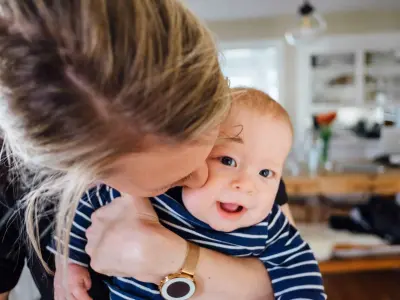
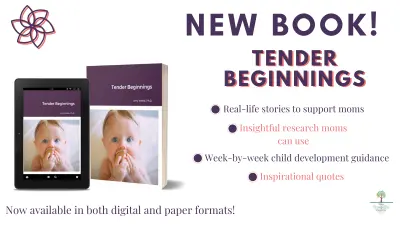
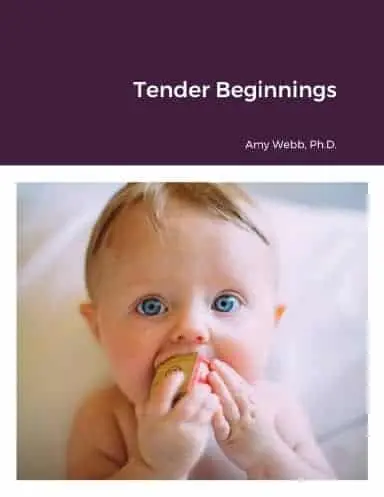
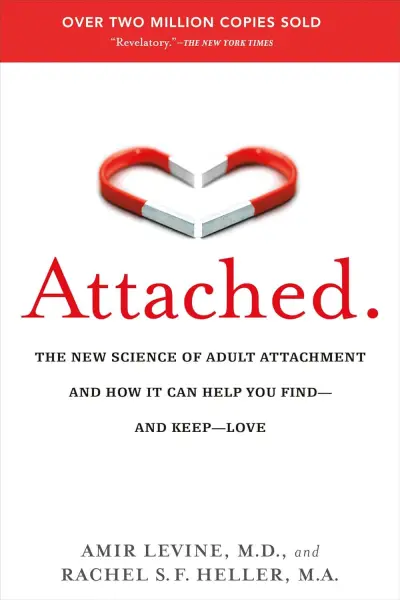
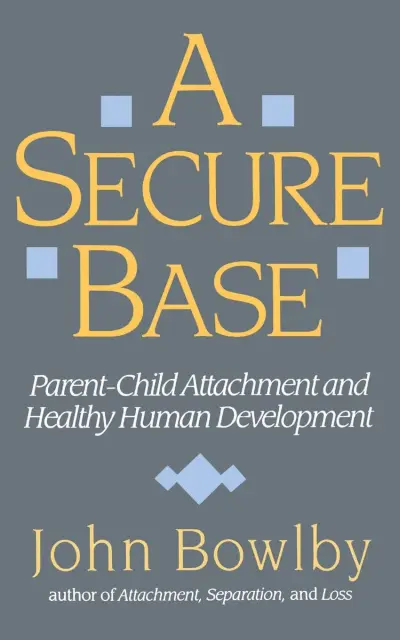
Leave a Reply